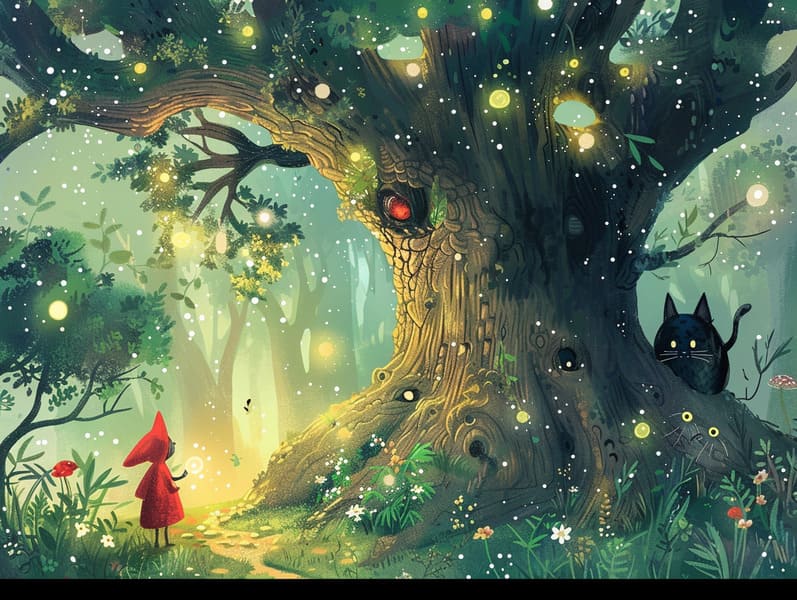The Story Behind Timeless Fairy Tales with the Immortal Beauty.
The Story Behind Timeless Fairy Tales with the Immortal Beauty.
Blog Article

Popular fairy tales have deep roots. These tales have been narrated from one generation to the next ages before they were ever recorded. They came from a variety of civilizations, including Indigenous traditions. They were initially told among older generations, often carrying themes and messages pertaining to the societal norms and beliefs of the time.
The renowned Brothers Grimm, Jacob and Wilhelm (the Grimm brothers), were among the first to collect and release many of these beloved tales. Their anthology, "Grimm's Fables," included narratives like "Ashenputtel," "The Bread Crumb Trail," and "Little Snow White," which have since become hallmarks in the world of famous fairy tales. Similarly, Hans Christian Andersen's imaginative tales, such as "The Mermaid's Tale," and "The Little Duckling," have floated into hearts worldwide, establishing their place in the pantheon of classic fairy tales.
Though they are old, these stories remain as pertinent as ever, especially as bedtime stories for kids. These charming stories are now available in various formats, including vibrantly illustrated books, fantastical animations, and internet fairy tales.
Their continued relevance can be ascribed to several whimsical characteristics:
Significant Morals: Old fairy tales often offer important moral lessons. Fairy tales like "The Boy Who Cried Wolf" teach the significance of truthfulness, while "The Hare and the Tortoise" illustrate the values of persistence and unpretentiousness. These tales offer children clear distinctions between right and wrong, helping to shape their moral compass in a subtle yet lasting way.
Warmth and Understanding: Fairy tales frequently include protagonists facing problems and hurdles, encouraging young listeners to comprehend with their struggles and back their triumphs. For instance, "Beauty's Beast" illustrates the benefit of seeing beyond the surface to see the inner self of a character, encouraging warmth and insight.
Cultural Appreciation: Many timeless fairy tales are deeply ingrained in the cultural contexts from which they sprang. Learning from these narratives can provide delightful insights into different societies, cultivating a sense of global appreciation and recognition.
Imagination and Creativity: The fantasy-filled elements in fairy tales—magical spells—revitalize children’s imaginations. These stories take readers to mythical realms, enlivening imaginative thinking and a sense of excitement that stays a lifetime.
Timeless fairy tales are not only charming but also educational. They work as enchanted tools in cultivating various cognitive and affective skills in little ones. When fairy tales are spoken, they foster language acquisition by showing new language and sophisticated sentence structures. This practice also strengthens listening abilities and focus, as young ones pay close attention, excited to see what happens next.
Furthermore, reflecting on the themes and characters of old fairy tales can improve evaluative skills and cognitive skills. Kids are guided to discern patterns, predict happenings, and make sense of cause and effect. These contemplations also support young readers voice their thoughts and feelings, advancing their emotional intelligence.
In today’s find it here high-tech era, the prevalence of digital storybooks has made these narratives more acquirable than ever. Internet sites and programs feature comprehensive collections of famous fairy tales that can be read or listened on anytime, anywhere. Fairy tales recited are particularly liked, sharing an fun way for young readers to delight in these spellbinding stories. Narrated books and spoken videos transport characters and settings to life, often enhanced by entrancing melodies and harmonies that amplify the narrative adventure.
The lasting appeal of timeless fairy tales lies in their ability to adjust to today's world while holding onto their core messages. Contemporary modernizations of these fairy tales often integrate more different protagonists and modern settings, making them meaningful to today’s audience. However, the essential messages of fortitude, kindness, and truth remain unchanged, continuing to touch young readers of all ages.
Classic fairy tales also offer a sense of calm and knowability. They put out a structured narrative with a definite beginning, middle, and end, often drawing to a close with the wrap-up of conflicts and the triumph of honesty over deceit. This certainty can be calming for young readers, furnishing a sense of steadfastness in an unpredictable world.
Ancient fairy tales continue to entrance and teach new generations, maintaining their loveliness and meaningfulness in modern society. As nighttime stories for kids, they afford a perfect blend of allure and teaching, advancing moral values, empathy, and creativity. The prevalence of online fairy tales and the prevalence of fairy tales read aloud make sure that these old stories remain acquirable to new generations.
By sustaining and imparting these tales, we continue to cherish the rich tapestry of fables and cultural heritage. Whether you are enjoying a artistically illustrated book, seeing a online collection, or listening through an voice book, the grace of timeless fairy tales is always within reach. These stories show us of the unwavering essence of narratives and its ability to unify us across epochs and places.
Whether you are browsing a richly illustrated book, delving into a online library, or listening on an audiobook, the majesty of classic fairy tales is always within reach.
These stories reveal of the unending influence of narratives and its ability to gather us across centuries and lands, establishing a link that enchants and educates alike.